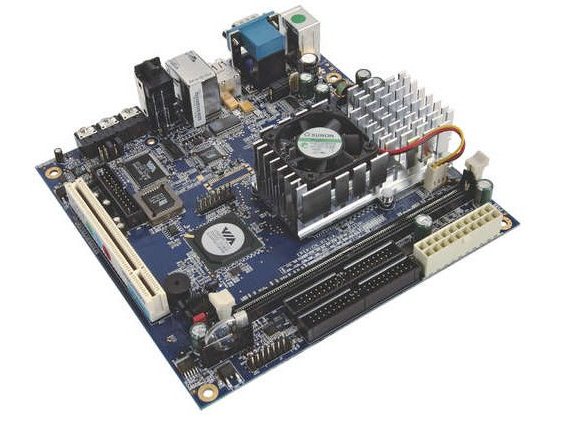TechRadar Verdict
A low surface area motherboard
Pros
- +
Mini-ITX
1.3GHz VIA C7
TV-out
Cons
- -
1x PCI Slot
1x DDR2 400/533 DIMM slot
Why you can trust TechRadar
VIA is no longer a name associated with first choices, whether you're considering graphics, chipset, or CPUs. Although low price points make it a popular choice, most benchmarks put its rivals' products in the lead. Because of this, VIA has never carved a dominating lead in any of these core markets. It does, however, remain a name to seek out if you're looking for a Mini- ITX solution.
Not to be confused with Micro- ATX, Mini-ITX is about embedding x86 compliant PCs into a much smaller space. The Epia CN13000 measures just 170x170mm, yet it has the features that would be found in a larger PC, including VGA, TV-out, USB and audio.
The difference is that while Micro-ATX boards support the same Intel and AMD CPUs that ATX desktop PCs do, Epia Mini ITX motherboards come with a custom-built VIA CPU, the C7.
The C7 is the latest in a line of processor architectures stretching back to VIA's 1999 acquisition of Cyrix and Centaur from IDT National Semiconductor. Cyrix helped create the market for budget processors, but lost the performance battle to AMD and similarly focused budget offerings. VIA took the technology behind Centaur's WinChip and the brand name of Cyrix to create the Cyrix III processor.
The original Socket 7 WinChip core suffered from a half-speed FPU and used less transistors than Intel's Pentium. It did benefit from a smaller surface area though, as well as lower costs and better power efficiency, making it ideal for mobile platforms, thin clients or low cost computers. With the Cyrix III - later renamed the C3 - VIA reduced the performance gap by increasing the cache size and clock speeds.
The replacement processors
The C3's replacement, the C7, scales up to 2GHz, with a TDP of a mere 20W and measures just 21mm2. Measured on a performance per watt basis, the C7 is the most efficient CPU on the market. Hardware features not present in Intel or AMD's offerings can be very useful, such as hardware-based random number generating and RSA encryption.
VIA offers processors within the embedded marketplace built around specific features. The Eden processor line, for instance, offers a thermal output of just 7.5W, negating the need for a fan, while the CoreFusion puts both Northbridge and CPU into the same package.
Sign up for breaking news, reviews, opinion, top tech deals, and more.
The lower spec of the C7 when compared to its full sized rivals means only a small heatsink with a single 40mm fan are needed for both Northbridge and CPU. Despite cramming so much into the tiny form factor, access to the IDE and SATA connectors is straightforward, with the capacitors placed out of the way at the top of the board so as not to be a nuisance.
Expansion is limited, the only option being a single legacy PCI slot and room to install one DIMM (up to 1GB). The small size of a case that supports this form factor will rule out the installation of large PCI cards, although most features of a media centre are built onto the board, so the restriction on PCI slots will prove less of an issue.
In testing, the CN13000 was very picky about which DDR2 stick it worked with. The chipset only supports 400MHz/533MHz memory, and with faster RAM it simply refused to POST.
The manual makes no mention of this or anything else; the only instructions you get are a small five-page cardboard guide rather than a proper manual. Although setting up the board is relatively straightforward, a lack of useful documentation doesn't help.
The chip you get with the CN13000 is a 1.3 GHz C7 model, one of the fastest VIA offerings for its EPIA boards. This is enough power to provide playback of the majority of standard definition media, although HD - even the efficient DivX variety - stutters so much it is unwatchable.
Benchmark results confirmed that a setup so small with reduced power requirements performs worse than a modern full sized computer, or even most second-hand systems for that matter. Since the onboard graphics don't support Pixel Shader 2.0, you're not going to be playing the latest games on this motherboard, but the engine is fine for 2D work.
For building a home theatre PC, Mini-ITX pales in comparison to what can be done with Micro-ATX systems using standard components. A larger but more powerful motherboard and processor can be had for less than the cost of this board. Despite these woes, this is still a reasonable all-in-one platform that's worth considering if you're looking to build a tiny machine. Just don't expect to be able to play back HD video. Orestis Bastounis
